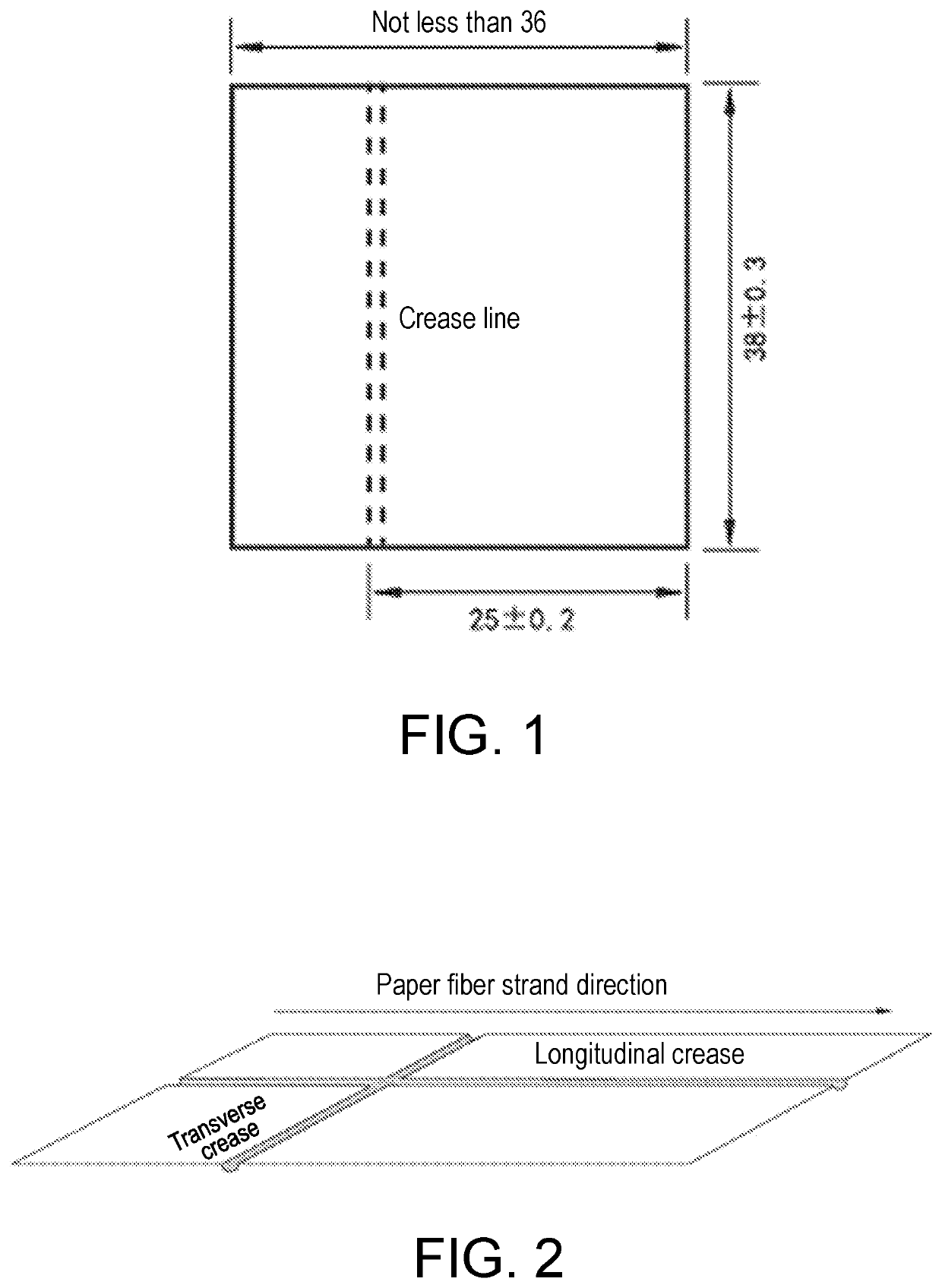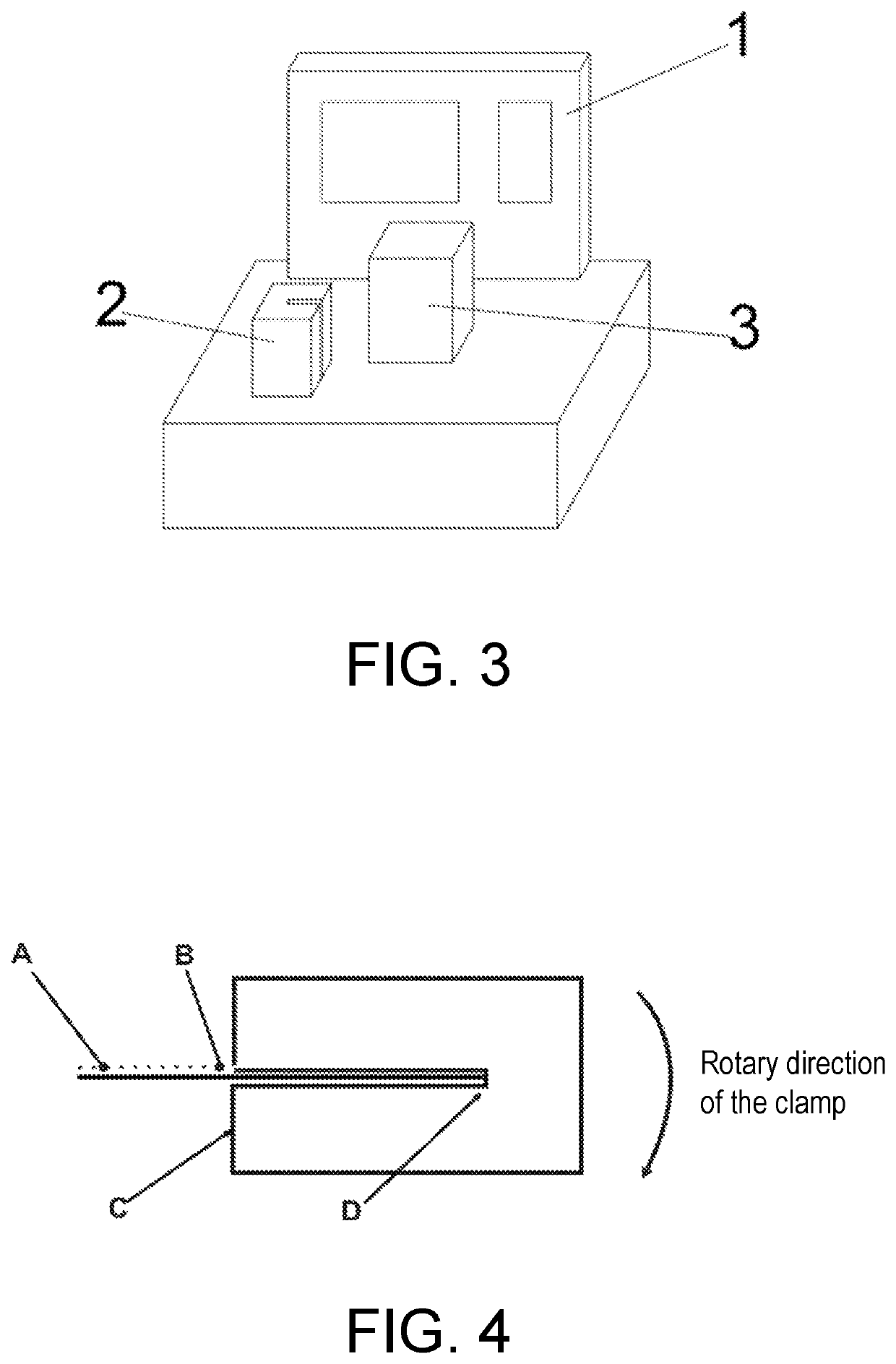Control method for transverse to longitudinal crease stiffness ratio
a control method and longitudinal crease technology, applied in the field of packaging, can solve the problems of lowering production quality and production efficiency, paper jam or paper forming distortion, etc., and achieve the effects of avoiding appearance defects of packing boxes, high packaging production efficiency, and good packaging effect of packaged products when loaded
- Summary
- Abstract
- Description
- Claims
- Application Information
AI Technical Summary
Benefits of technology
Problems solved by technology
Method used
Image
Examples
Embodiment Construction
[0024]The present invention will be further explained in conjunction with the following drawings.
[0025]As shown in FIGS. 1 and 2, the method for testing a crease stiffness of a carton comprises the following steps. Samples are prepared first, to be specific, a sample is cut out from a carton along the direction of a crease line, wherein a crease is neither bended nor smoothened in sample cutting; the length of the crease line of the sample is 38±0.3 mm. A paper sheet at one side of the crease line is about 15 mm wide, and about 30 mm wide at the other side (see FIG. 3). The sample is cut once again (see FIG. 2) so as to ensure the distance between the crease line and a cutting edge is 25±0.2 mm, and ensure a resistance measurement distance at 25 mm during folding along the crease line. According to the above method, at least five longitudinal samples with their crease lines parallel to the paper direction and five transverse samples with their crease lines vertical to the paper dire...
PUM
 Login to View More
Login to View More Abstract
Description
Claims
Application Information
 Login to View More
Login to View More - R&D
- Intellectual Property
- Life Sciences
- Materials
- Tech Scout
- Unparalleled Data Quality
- Higher Quality Content
- 60% Fewer Hallucinations
Browse by: Latest US Patents, China's latest patents, Technical Efficacy Thesaurus, Application Domain, Technology Topic, Popular Technical Reports.
© 2025 PatSnap. All rights reserved.Legal|Privacy policy|Modern Slavery Act Transparency Statement|Sitemap|About US| Contact US: help@patsnap.com


